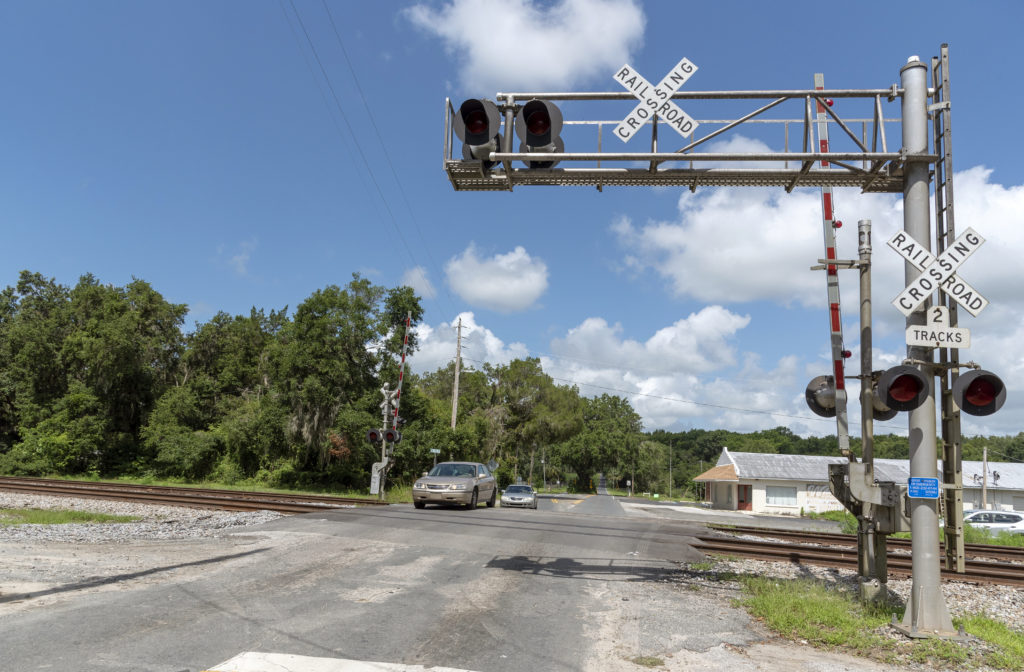
A final rule mandating states update or develop highway-rail grade crossing action plans has been issued by the Federal Railroad Administration.
The FRA recently released data showing that 94% of fatalities related to rail transit take place at railroad crossings and/or are results of trespassing. A highway-rail grade crossing is the point where railroad tracks intersect with a roadway on the same grade or level. There are more than 250,000 of these crossings across the country, and more than 400 related deaths occur each year in these areas due to trespassing.
The Federal Register released its final ruling in mid-December requesting highway-rail grade crossing action steps to be planned out by 40 different states and the District of Columbia. The remaining 10 states, which already have plans in place, must also update these plans while indicating exactly what they have done thus far to take action on them.
These outlined plans are required to identify all crossings that have seen safety issues and incidents, and specific strategies must be indicated for improving the overall safety of these crossings. According to the Federal Register announcement, these strategies could include grade separations or closures, and each state must identify one official manager to ensure that the indicated action plan comes to fruition.
“The actions states must take to develop action plans and, more specifically, to develop specific strategies for improving grade crossing safety can, if done properly, significantly improve safety and complement other efforts by states to improve transportations safety generally,” said the document.
The FRA was urged to implement regulations requiring highway-rail grade crossing action plans by 2015’s Fixing America’s Surface Transportation (FAST) Act, from which this most recent rule is derived. The provision in FRA’s Notice of Proposed Rulemaking detailing said action plans was initially published near the end of 2019.
Prior to those regulations, 2008’s Rail Safety Improvement Act pushed a number of states to make such safety plans, which led to 10 particular states with the largest number of highway-rail grade crossing incidents between 2006 and 2008 to be identified by the Secretary of Transportation at that time. Those states were then required to create specific action plans aiming to lead toward major safety improvements. The states required to make such plans after analysis of agency data regarding crossing collisions were Alabama, California, Florida, Georgia, Illinois, Indiana, Iowa, Louisiana, Ohio, and Texas.
Because the necessary safety action plans proved to be costly, many members of the public urged the FRA to allocate funding to these specified states–especially as Delaware’s Department of Transportation explained that its needed costs were going to make or break the state’s ability to make important–and potentially life-saving–safety upgrades.
“DelDOT noted that the state of Delaware currently experiences an extremely low number of train-related crashes and asserted that developing an action plan would draw resources away from other ongoing efforts to make a positive safety impact on the state and its communities,” said the Federal Register document. “Accordingly, DelDOT recommended that FRA establish guidelines that, if met, would exempt a state from the requirement to develop an action plan.”
Currently, states are able to utilize the Federal Highway Administration’s Railway-Highway Crossings Program funding to develop needed action plans, although the final rule’s mandate has yet to provide any provision allocating specific federal funds for said plans.
Once plans are formed, the FRA must, as stated in the FAST Act, review and, upon approval, publish the state’s plan publicly on an official website. If a submitted plan is determined to be inadequate, the agency must notify the state of deficiencies and allow the state 60 days to correct or add what may be missing.
If the two-month deadline is missed, the FRA must then publish online that the state in question has not completed a proper action plan. As states continue to work on their action plans and updates, DRA representatives and inspectors are available to help those with questions. DRA will also provide highway-rail grade crossing incident data to states when requested.
This final ruling is officially in place as of January 13th, and states are required to submit their plans or updates to the FRA by at least 14 months after the publication date of the final rule.
Reader Interactions